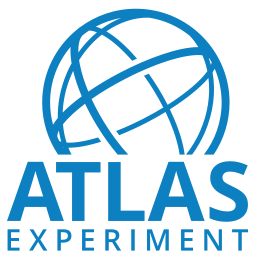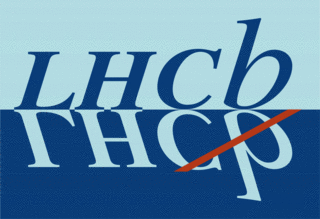Photon primary dataset in AOD format from RunB of 2011 (/Photon/Run2011B-12Oct2013-v1/AOD)
/Photon/Run2011B-12Oct2013-v1/AOD, CMS collaboration
Cite as: CMS collaboration (2020). Photon primary dataset in AOD format from RunB of 2011 (/Photon/Run2011B-12Oct2013-v1/AOD). CERN Open Data Portal. DOI:10.7483/OPENDATA.CMS.AU2D.W0V9
Dataset Collision CMS 7TeV pp CERN-LHC
Description
Photon primary dataset in AOD format from RunB of 2011. Run period from run number 175833 to 180252.
The list of validated runs, which must be applied to all analyses, can be found in
CMS list of validated runs Cert_160404-180252_7TeV_ReRecoNov08_Collisions11_JSON.txt
Dataset characteristics
29725348 events. 1674 files. 5.5 TiB in total.System details
FT_53_LV5_AN1CMSSW_5_3_32
Recommended container image for analyses is available in the following locations (see guide):
docker.io/cmsopendata/cmssw_5_3_32-slc6_amd64_gcc472:latestgitlab-registry.cern.ch/cms-cloud/cmssw-docker-opendata/cmssw_5_3_32-slc6_amd64_gcc472:latest
How were these data selected?
Data taking / HLT
The collision data were assigned to different RAW datasets using the following HLT configuration.
Data processing / RECO
This primary AOD dataset was processed from the RAW dataset by the following step (identical to 2011 RunA):
Step: RECO
Release: CMSSW_5_3_7_patch5
Global tag: FT_R_53_V18::All
Configuration file for RECO step reco_2011_Photon
HLT trigger paths
The possible HLT trigger paths in this dataset are:
HLT_DoubleEle33
HLT_DoubleEle33_CaloIdL
HLT_DoubleEle33_CaloIdL_CaloIsoT
HLT_DoubleEle33_CaloIdT
HLT_DoubleEle45_CaloIdL
HLT_DoublePhoton33
HLT_DoublePhoton33_HEVT
HLT_DoublePhoton38_HEVT
HLT_DoublePhoton40_CaloIdL_MR150
HLT_DoublePhoton40_CaloIdL_R014_MR150
HLT_DoublePhoton40_MR150
HLT_DoublePhoton40_R014_MR150
HLT_DoublePhoton43_HEVT
HLT_DoublePhoton48_HEVT
HLT_DoublePhoton50
HLT_DoublePhoton5_IsoVL_CEP
HLT_DoublePhoton60
HLT_DoublePhoton70
HLT_DoublePhoton80
HLT_Photon125
HLT_Photon125_NoSpikeFilter
HLT_Photon135
HLT_Photon200_NoHE
HLT_Photon20_CaloIdVL_IsoL
HLT_Photon20_R9Id_Photon18_R9Id
HLT_Photon225_NoHE
HLT_Photon26_CaloIdL_IsoVL_Photon18
HLT_Photon26_CaloIdL_IsoVL_Photon18_CaloIdL_IsoVL
HLT_Photon26_CaloIdL_IsoVL_Photon18_R9Id
HLT_Photon26_CaloIdXL_IsoXL_Photon18
HLT_Photon26_CaloIdXL_IsoXL_Photon18_CaloIdXL_IsoXL
HLT_Photon26_CaloIdXL_IsoXL_Photon18_CaloIdXL_IsoXL_Mass60
HLT_Photon26_CaloIdXL_IsoXL_Photon18_R9Id
HLT_Photon26_CaloIdXL_IsoXL_Photon18_R9IdT_Mass60
HLT_Photon26_IsoVL_Photon18
HLT_Photon26_IsoVL_Photon18_IsoVL
HLT_Photon26_Photon18
HLT_Photon26_R9IdT_Photon18_CaloIdXL_IsoXL_Mass60
HLT_Photon26_R9IdT_Photon18_R9IdT_Mass60
HLT_Photon26_R9Id_Photon18_CaloIdL_IsoVL
HLT_Photon26_R9Id_Photon18_CaloIdXL_IsoXL
HLT_Photon26_R9Id_Photon18_R9Id
HLT_Photon30_CaloIdVL
HLT_Photon30_CaloIdVL_IsoL
HLT_Photon32_CaloIdL_Photon26_CaloIdL
HLT_Photon36_CaloIdL_IsoVL_Photon22
HLT_Photon36_CaloIdL_IsoVL_Photon22_CaloIdL
HLT_Photon36_CaloIdL_IsoVL_Photon22_CaloIdL_IsoVL
HLT_Photon36_CaloIdL_IsoVL_Photon22_R9Id
HLT_Photon36_CaloIdL_Photon22_CaloIdL
HLT_Photon36_CaloIdVL_Photon22_CaloIdVL
HLT_Photon36_CaloId_IsoVL_Photon22_R9Id
HLT_Photon36_IsoVL_Photon22
HLT_Photon36_Photon22
HLT_Photon36_R9Id_Photon22_CaloIdL_IsoVL
HLT_Photon36_R9Id_Photon22_R9Id
HLT_Photon400
HLT_Photon40_CaloIdL_Photon28_CaloIdL
HLT_Photon44_CaloIdL_Photon34_CaloIdL
HLT_Photon48_CaloIdL_Photon38_CaloIdL
HLT_Photon50_CaloIdVL
HLT_Photon50_CaloIdVL_IsoL
HLT_Photon75_CaloIdVL
HLT_Photon75_CaloIdVL_IsoL
HLT_Photon90_CaloIdVL
HLT_Photon90_CaloIdVL_IsoL
How were these data validated?
During data taking all the runs recorded by CMS are certified as good for physics analysis if all subdetectors, trigger, lumi and physics objects (tracking, electron, muon, photon, jet and MET) show the expected performance. Certification is based first on the offline shifters evaluation and later on the feedback provided by detector and Physics Object Group experts. Based on the above information, which is stored in a specific database called Run Registry, the Data Quality Monitoring group verifies the consistency of the certification and prepares a json file of certified runs to be used for physics analysis. For each reprocessing of the raw data, the above mentioned steps are repeated. For more information see:
CMS data quality monitoring: Systems and experiences
The CMS Data Quality Monitoring software experience and future improvements
The CMS data quality monitoring software: experience and future prospects
How can you use these data?
You can access these data through the CMS Virtual Machine. See the instructions for setting up the Virtual Machine and getting started in
Files and indexes
Disclaimer
These open data are released under the Creative Commons Zero v1.0 Universal license.
Neither the experiment(s) ( CMS ) nor CERN endorse any works, scientific or otherwise, produced using these data.
This release has a unique DOI that you are requested to cite in any applications or publications.







